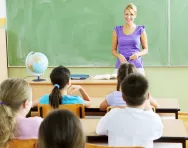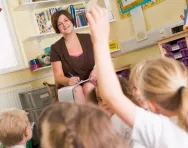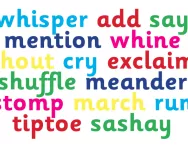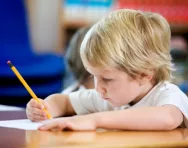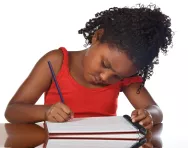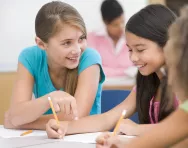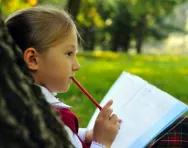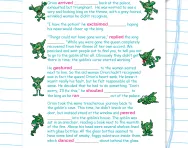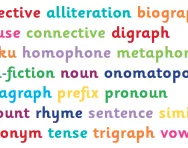Important update from TheSchoolRun
For the past 13 years, TheSchoolRun has been run by a small team of mums working from home, dedicated to providing quality educational resources to primary school parents. Unfortunately, rising supplier costs and falling revenue have made it impossible for us to continue operating, and we’ve had to make the difficult decision to close. The good news: We’ve arranged for another educational provider to take over many of our resources. These will be hosted on a new portal, where the content will be updated and expanded to support your child’s learning.
What this means for subscribers:
- Your subscription is still active, and for now, you can keep using the website as normal — just log in with your usual details to access all our articles and resources*.
- In a few months, all resources will move to the new portal. You’ll continue to have access there until your subscription ends. We’ll send you full details nearer the time.
- As a thank you for your support, we’ll also be sending you 16 primary school eBooks (worth £108.84) to download and keep.
A few changes to be aware of:
- The Learning Journey weekly email has ended, but your child’s plan will still be updated on your dashboard each Monday. Just log in to see the recommended worksheets.
- The 11+ weekly emails have now ended. We sent you all the remaining emails in the series at the end of March — please check your inbox (and spam folder) if you haven’t seen them. You can also follow the full programme here: 11+ Learning Journey.
If you have any questions, please contact us at [email protected]. Thank you for being part of our journey it’s been a privilege to support your family’s learning.
*If you need to reset your password, it will still work as usual. Please check your spam folder if the reset email doesn’t appear in your inbox.
What is shared writing?

What is shared writing?
Shared writing is a process teachers use on a regular basis to help children to understand how to write a particular kind of text and to provide them with a model piece of writing to emulate. It involves a teacher producing some text on the board with input from the class.
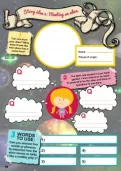

Download a FREE Creative Writing toolkit!
- KS1 & KS2 workbooks
- Bursting with fill-in prompt sheets and inspiring ideas
- Story structure tips, style guides and editing suggestions
Children are encouraged to put their hands up to give suggestions, and the use of talk partners (where children get into pairs and discuss ideas before contributing) and writing on mini-whiteboards can really help children in generating ideas. These two strategies ensure that all the children are properly engaged in a lesson, rather than just the few who always put their hands up!
The teacher may then refer back to the success criteria and discuss with children whether they think they have achieved this.
In this short session, the teacher has encouraged children to use their imagination to describe the setting and characters. She has helped them to include a simile, adjectives and some powerful verbs. She has also encouraged them to extend sentences using connectives (although this has not been explicitly referred to). She has modelled where to put capitals and full stops.
Shared writing is a great way to fire up children's imagination; collaborating on ideas and 'borrowing' from others provides children with a much richer vocabulary to use when writing. It also gives children a model of what is expected of their writing in terms of content, spelling, punctuation and grammar.
Teachers carry out shared writing sessions with a whole class and also in groups. Group shared writing is often carried out for lower-ability writers who need more support, or for more able writers, in order to show them to use a feature the rest of the class are not ready for yet, for example: adverbs, metaphors or speech punctuation.
Here is an example of how a shared writing session might be carried out to a Year 3 class. The teacher's words are in bold. Words on the board are in italic:
Today we are going to imagine we are Theseus, travelling through the maze towards the Minotaur. These are the things we need to include in our writing:
Teacher shows the following already written on the board:
Learning objective: To write about Theseus' journey into the maze
Success criteria: Describe the maze using sight, sound, touch and smell. Use capitals and full stops in the right places
I am going to start by writing:
I arrive at the entrance of the maze, feeling
How might Theseus be feeling?
Teacher takes ideas from children including: scared, apprehensive, terrified, petrified, brave, excited.
These are all great ideas. I am going to choose a couple to finish my sentence:
I arrive at the entrance of the maze, feeling petrified but pretending to be brave.
Now I want you to close your eyes and imagine you are Theseus arriving at the entrance to the maze. What can you see? What can you smell? Can you hear anything? Talk to someone next to you about your ideas.
Teacher takes ideas from the children, including: mouldy walls, a dark tunnel, rats scuttling, the sound of bones crunching, people screaming.
You are doing really well at making this all sound very scary! Now I am starting a new sentence, so what do I need at the beginning? (Child answers: "A capital letter."). That's right, a capital letter. I am going to write:
I am faced with a dark tunnel and I can see rats scuttling around.
Could we improve this, by comparing the dark tunnel to something else? Could we say: A tunnel as dark as…..? Talk to someone next to you about your ideas.
Teacher takes ideas from children including: night, a black hole, the midnight sky, black paper, a haunted house.
These are all good ideas, but I'm going to choose 'the midnight sky'.
Teacher changes sentence so it reads:
I am faced with a tunnel as dark as the midnight sky and I can see rats scuttling around.
What do you think he hears as he heads down the tunnel?
Teacher takes ideas from children including: terrified screams, the Minotaur roaring, people being eaten.
I am going to write:
I head down the tunnel and hear the Minotaur roaring and terrified screams.
Could we improve this by saying who is making the terrified screams and why?
Teacher takes ideas from children.
Let’s re-write the sentence:
I head down the tunnel and hear the Minotaur roaring and the terrified screams of people waiting to be eaten.
Now, listen to me read what we have written so far:
I arrive at the entrance of the maze, feeling petrified but pretending to be brave. I am faced with a tunnel as dark as the midnight sky and I can see rats scuttling around. I head down the tunnel and hear the Minotaur roaring and the terrified screams of people waiting to be eaten.


